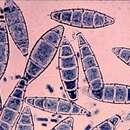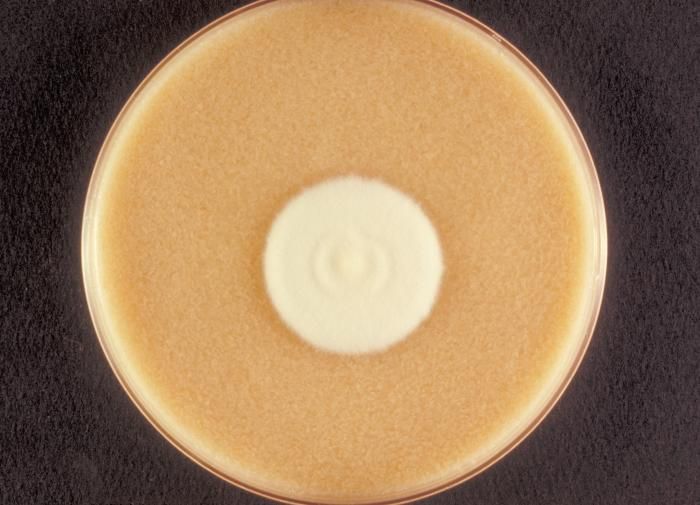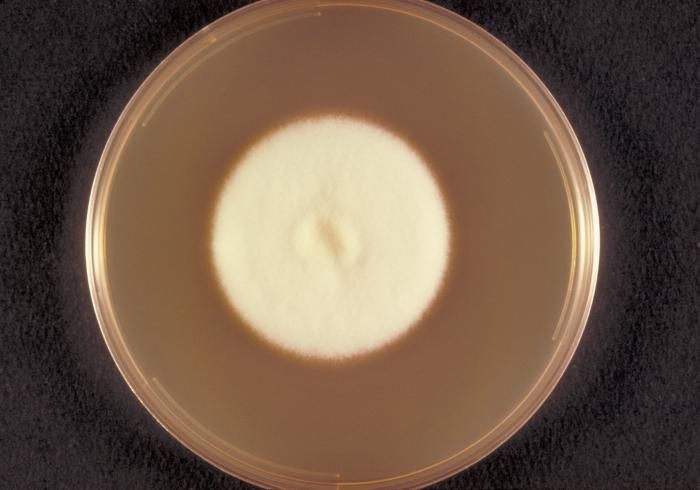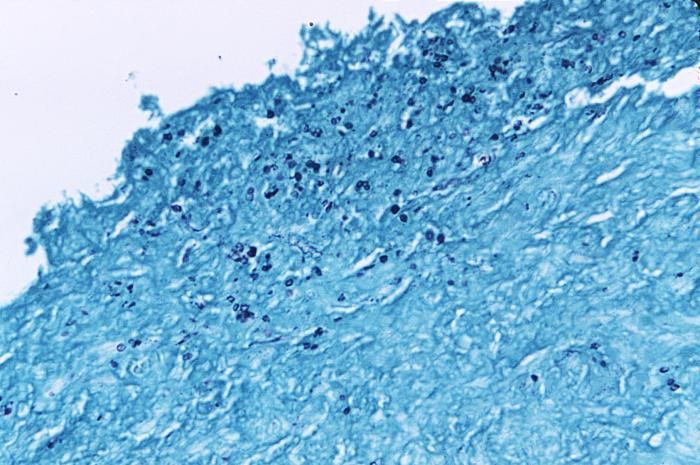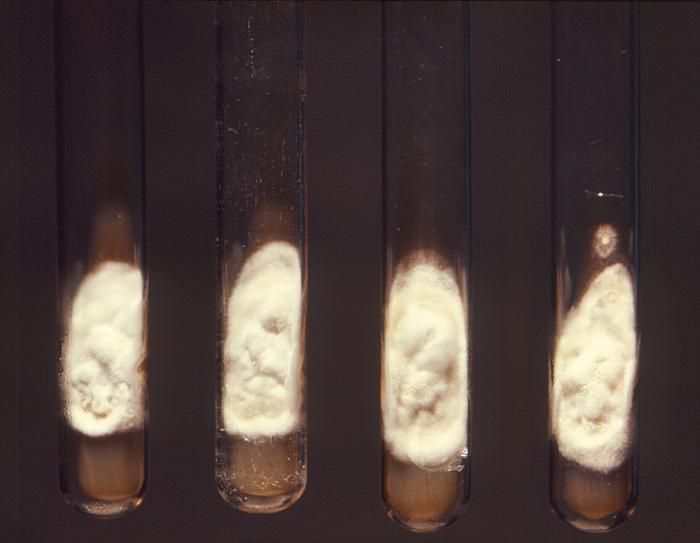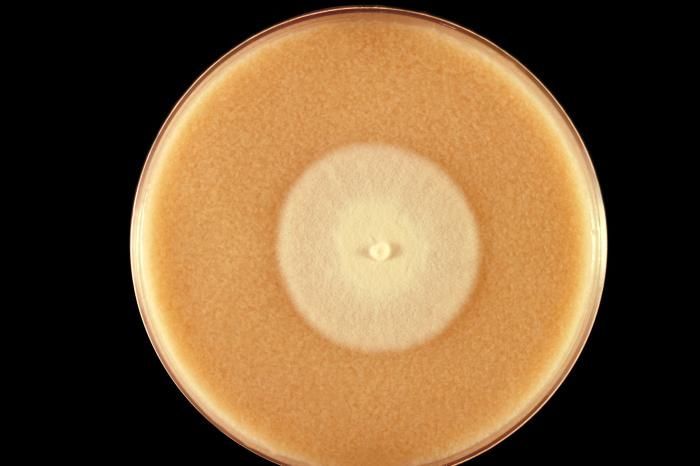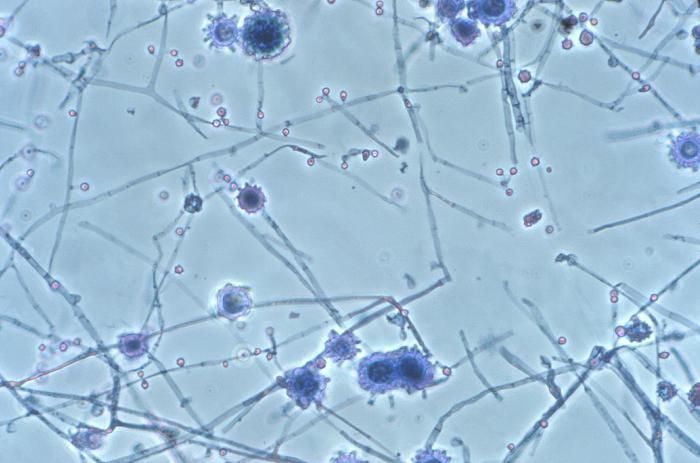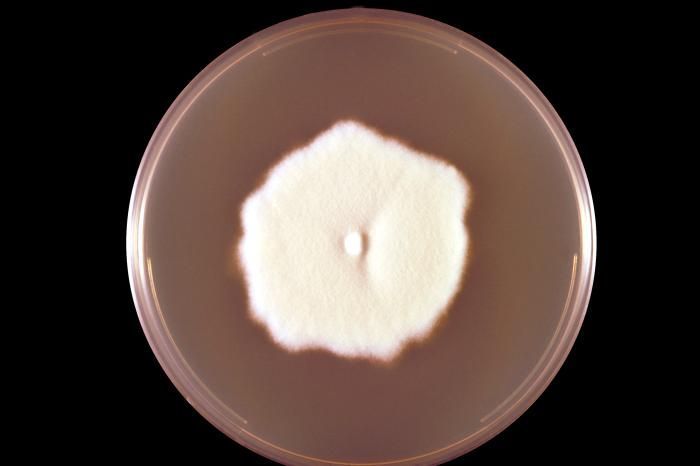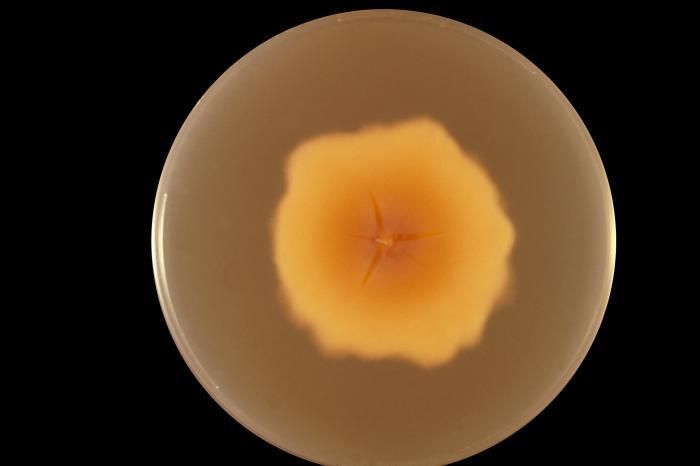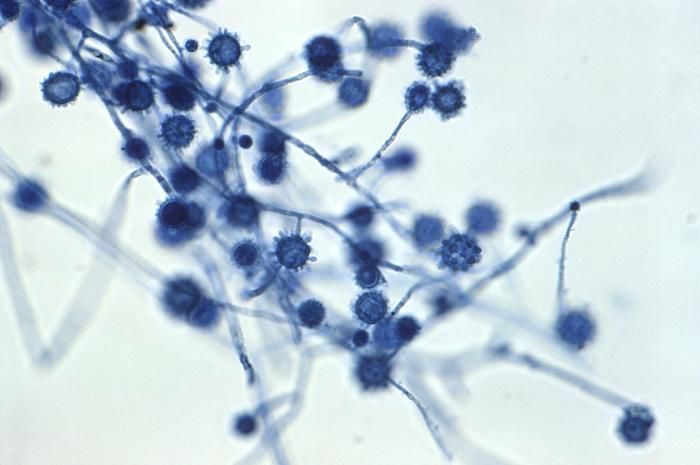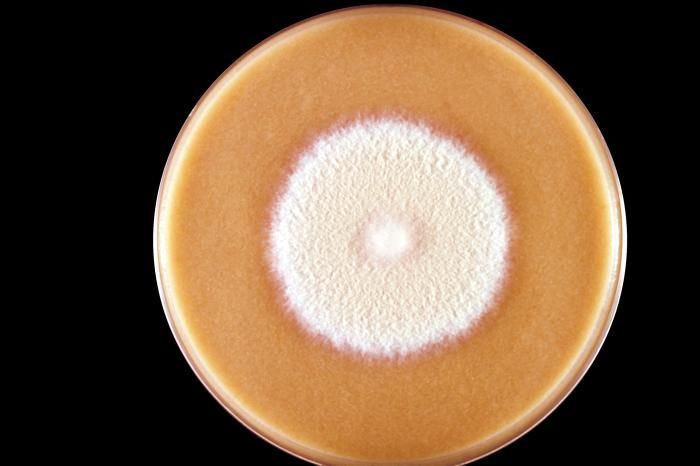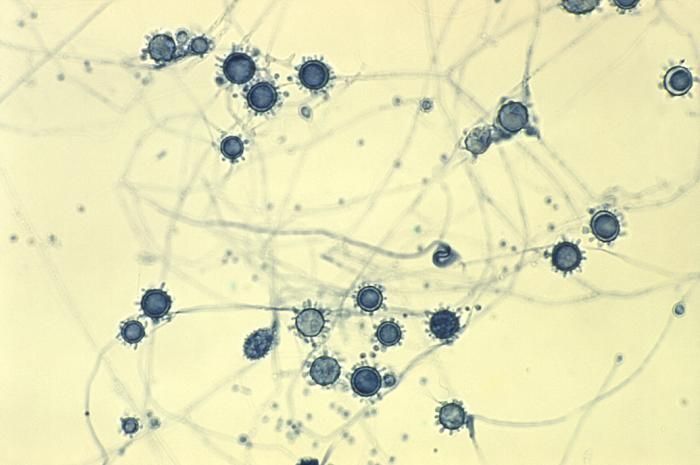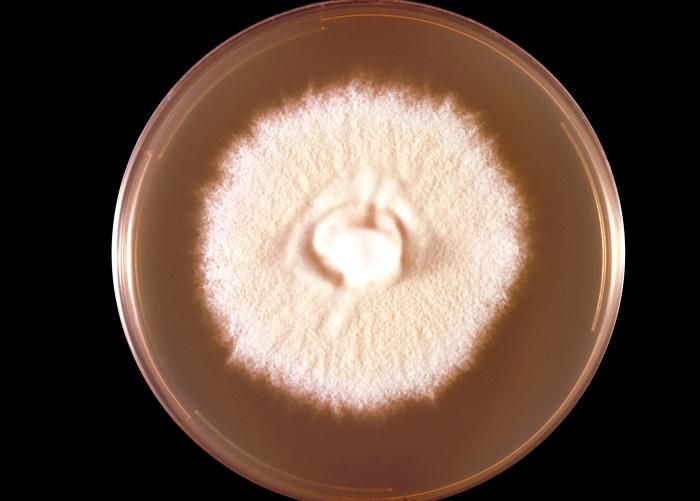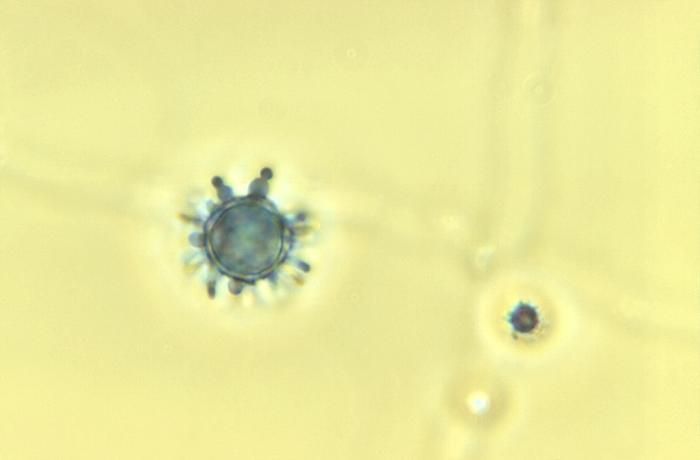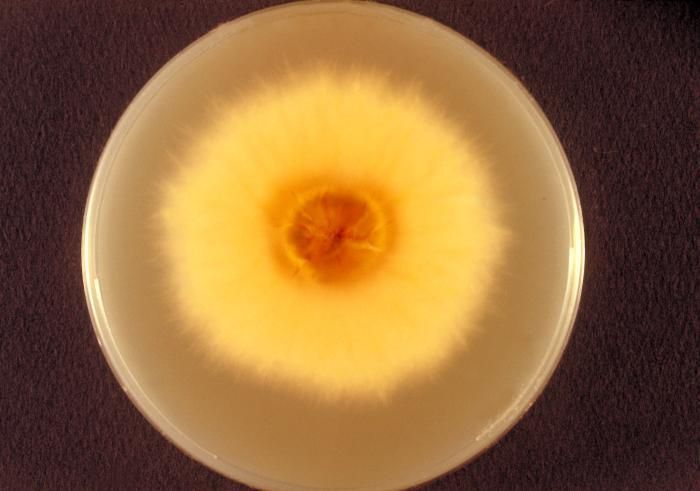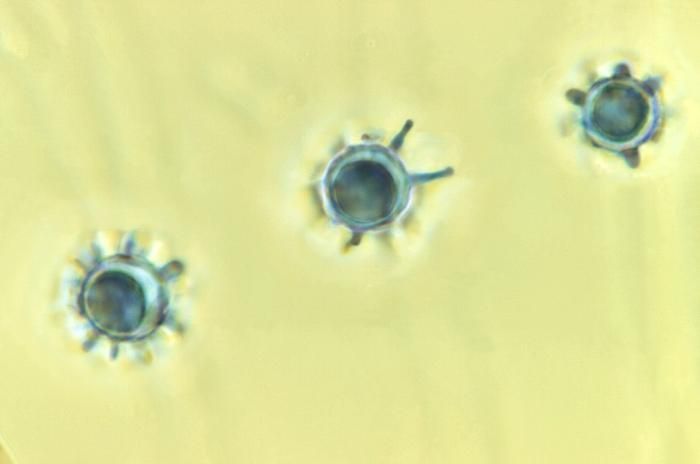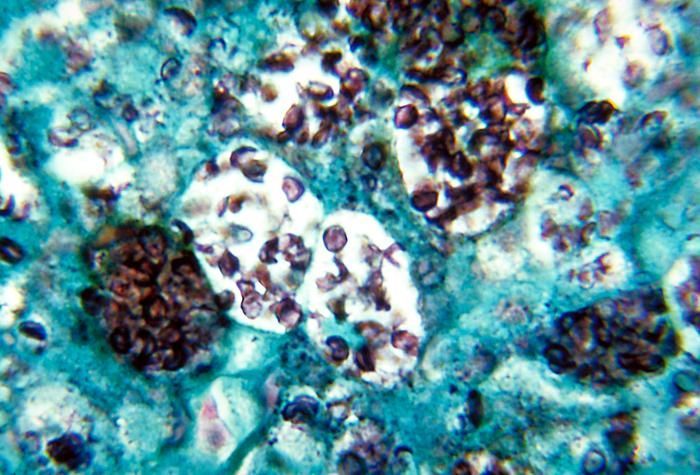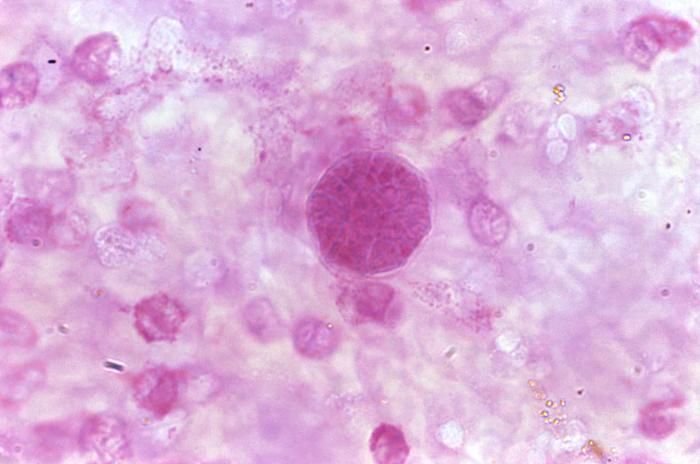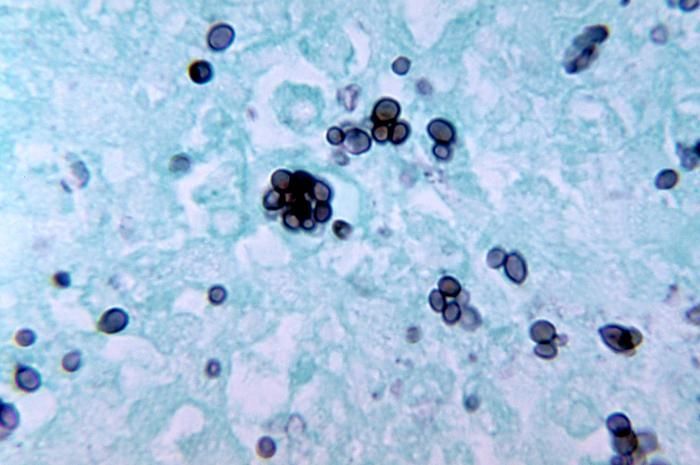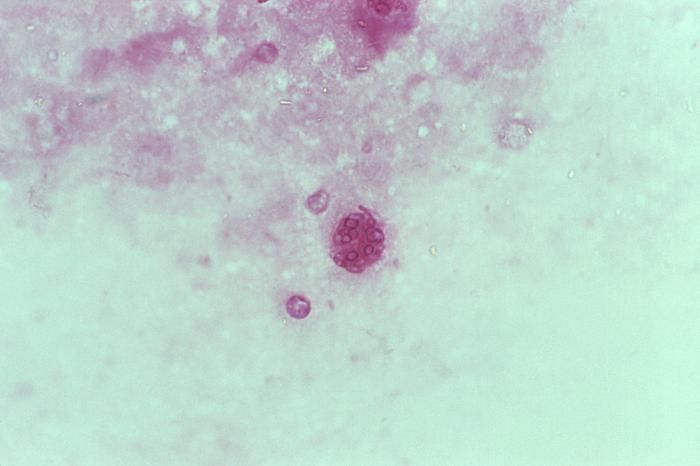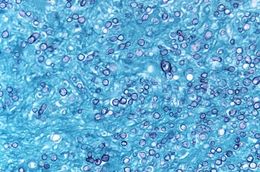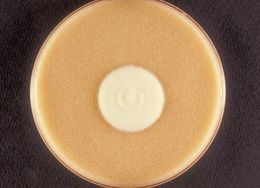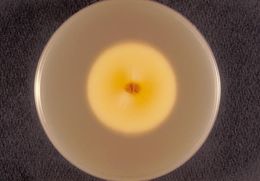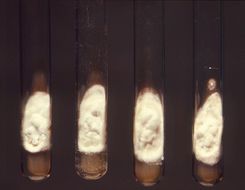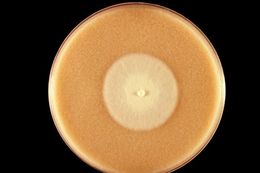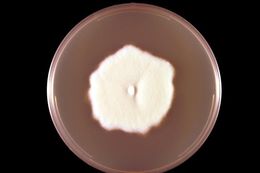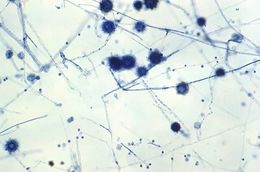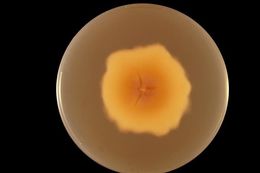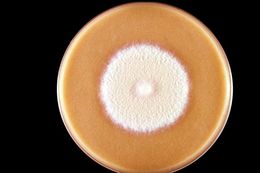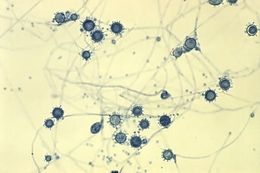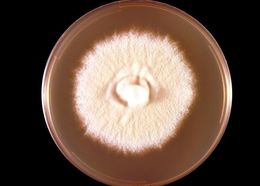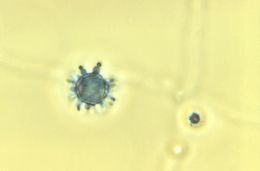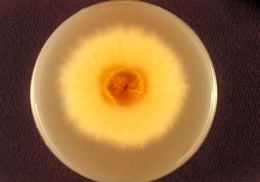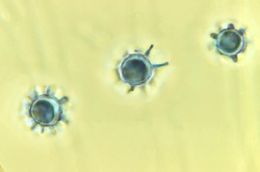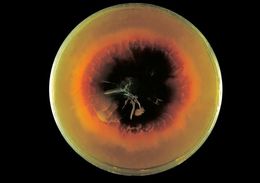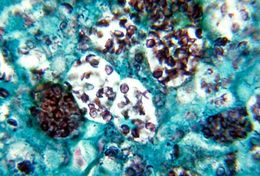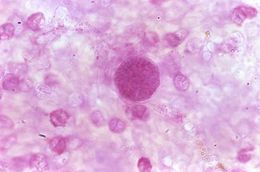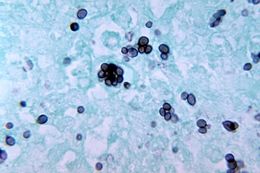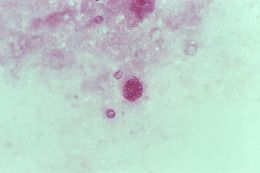-
Magnified 300X, this photomicrograph revealed the presence of Histoplasma capsulatum var. duboisii fungal organisms in an unidentified tissue sample.What is histoplasmosis?Histoplasmosis is a disease caused by the fungus Histoplasma capsulatum. Its symptoms vary greatly, but the disease primarily affect the lungs. Occasionally, other organs are affected. This form of the disease is called disseminated histoplasmosis, and it can be fatal if untreated.Created: 1972
-
This is a top view of a cereal agar plate culture growing the fungus Microsporum persicolor.Created: 1973
-
Magnified 300X, this photomicrograph revealed the presence of Histoplasma capsulatum var. duboisii fungal organisms in an unidentified tissue sample.What is histoplasmosis?Histoplasmosis is a disease caused by the fungus Histoplasma capsulatum. Its symptoms vary greatly, but the disease primarily affect the lungs. Occasionally, other organs are affected. This form of the disease is called disseminated histoplasmosis, and it can be fatal if untreated.Created: 1972
-
This is a top view of a Sabourauds dextrose agar plate culture growing Microsporum persicolor.Created: 1973
-
Magnified 300X, this photomicrograph revealed the presence of Histoplasma capsulatum fungal organisms in an unidentified tissue sample.What is histoplasmosis?Histoplasmosis is a disease caused by the fungus Histoplasma capsulatum. Its symptoms vary greatly, but the disease primarily affect the lungs. Occasionally, other organs are affected. This form of the disease is called disseminated histoplasmosis, and it can be fatal if untreated.Created: 1972
-
This is the bottom, or reverse view of a Sabourauds dextrose agar plate culture of Microsporum persicolor.Created: 1973
-
This photograph revealed slant-culture test tubes, each containing a colony of Histoplasma capsulatum fungal organisms, which had been isolated from Israeli soil samples. H. capsulatum is the etiologic agent responsible for causing the disease known as histoplasmosis.What is histoplasmosis?Histoplasmosis is a disease caused by the fungus Histoplasma capsulatum. Its symptoms vary greatly, but the disease primarily affect the lungs. Occasionally, other organs are affected. This form of the disease is called disseminated histoplasmosis, and it can be fatal if untreated.Created: 1974
-
This is a top view of a cereal agar plate culture growing a colony of Microsporum persicolor fungus.Created: 1973
-
At a magnification of 400X, this photomicrograph revealed some of the ultrastructural morphology exhibited by Histoplasma capsulatum fungal macroconidia and macroconidia, which were isolated from Israeli soil samples.Created: 1974
-
This is a top view of a Sebourauds dextrose agar plate culture growing a colony of Microsporum persicolor fungus.Created: 1973
-
At a magnification of 400X, this photomicrograph revealed some of the ultrastructural morphology exhibited by Histoplasma capsulatum fungal macroconidia and macroconidia, which were isolated from Israeli soil samples.Created: 1974
-
This is a reverse (bottom) view of a Sebourauds dextrose agar plate culture growing a colony of Microsporum persicolor.Created: 1973
-
At a magnification of 400X, this photomicrograph revealed some of the ultrastructural morphology exhibited by Histoplasma capsulatum fungal macroconidia and macroconidia, which were isolated from Israeli soil samples.Created: 1974
-
This is a top view of a cereal agar plate culture growing a colony of Microsporum persicolor fungus.Created: 1973
-
At a magnification of 400X, this photomicrograph revealed some of the ultrastructural morphology exhibited by Histoplasma capsulatum fungal macroconidia and microconidia.Created: 1974
-
This is a top view of a Sebourauds dextrose agar plate culture growing a colony of Microsporum persicolor fungus.Created: 1973
-
At a magnification of 1125X, this photomicrograph revealed some of the ultrastructural morphology exhibited by a Histoplasma capsulatum fungal macroconidium. The reproductive spores produced by H. capsulatum can be either macroconidia or microconidia. It is the macroconidia that exhibits finger-like projections from its surface, whereas, the microconidia are much smaller, round, and possess a smooth surface. See PHIL 299 for a depiction of both macro- and microconidia.What is histoplasmosis?Histoplasmosis is a disease caused by the fungus Histoplasma capsulatum. Its symptoms vary greatly, but the disease primarily affect the lungs. Occasionally, other organs are affected. This form of the disease is called disseminated histoplasmosis, and it can be fatal if untreated.Created: 1973
-
This is a reverse (bottom) view of a Sebourauds dextrose agar plate culture growing a colony of Microsporum persicolor.Created: 1973
-
Under a magnification of 1125X this photomicrograph depicted the the presence of three Histoplasma capsulatum macroconidia, differentiated from the microconidia by the presence of projections emanating from their surface, as seen in this case. H. capsulatum is the etiologic agent responsible for causing the disease known as histoplasmosis.What is histoplasmosis?Histoplasmosis is a disease caused by the fungus Histoplasma capsulatum. Its symptoms vary greatly, but the disease primarily affect the lungs. Occasionally, other organs are affected. This form of the disease is called disseminated histoplasmosis, and it can be fatal if untreated.Created: 1973
-
This plate culture is growing the fungus Microsporum persicolor, also known as Trichophyton persicolor.Created: 1964
-
Note the histopathologic changes seen in histoplasmosis due to Histoplasma capsulatum using methenamine silver stain.Created: 1972
-
This photomicrograph revealed some of the histopathologic characteristics found within a pus specimen, which was prepared using periodic acid-Schiff (PAS), and which had been harvested from a skin lesion in a case of cutaneous coccidioidomycosis. In this particular specimen youll note the chlamydospore, or immature spherule of a Coccidioides immitis fungal organism. As the reproductive structure of this, as well as other types of fungi, this spherule is also known as a chlamydoconidium, and contains the organisms endospores.Created: 1975
-
Note the histopathologic changes seen in histoplasmosis due to Histoplasma capsulatum using methenamine silver stain.Created: 1972
-
This photomicrograph revealed some of the histopathologic characteristics found within a pus specimen, which was prepared using periodic acid-Schiff (PAS), and which had been harvested from a skin lesion in a case of cutaneous coccidioidomycosis. In this particular specimen youll note the chlamydospore, or immature spherule of a Coccidioides immitis fungal organism. As the reproductive structure of this, as well as other types of fungi, this spherule is also known as a chlamydoconidium, and contains the organisms endospores.Created: 1975

